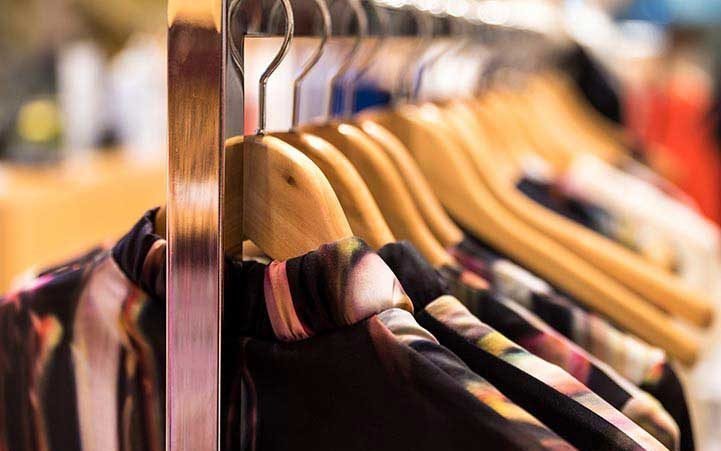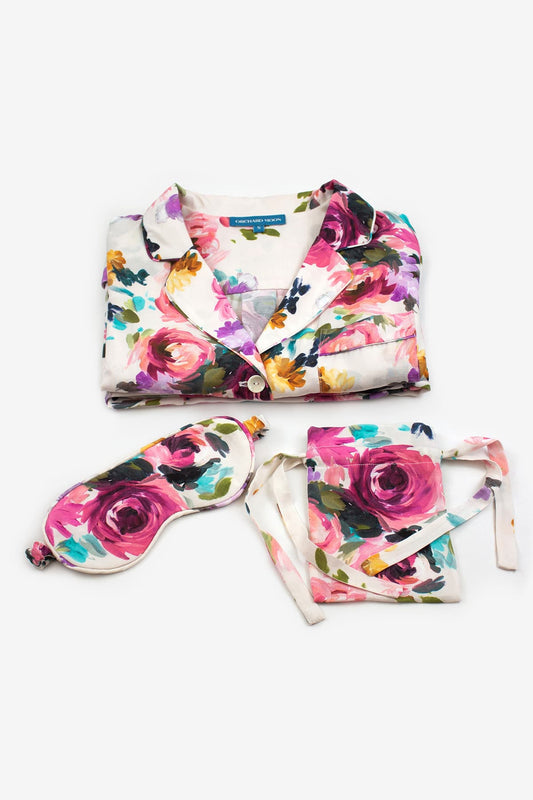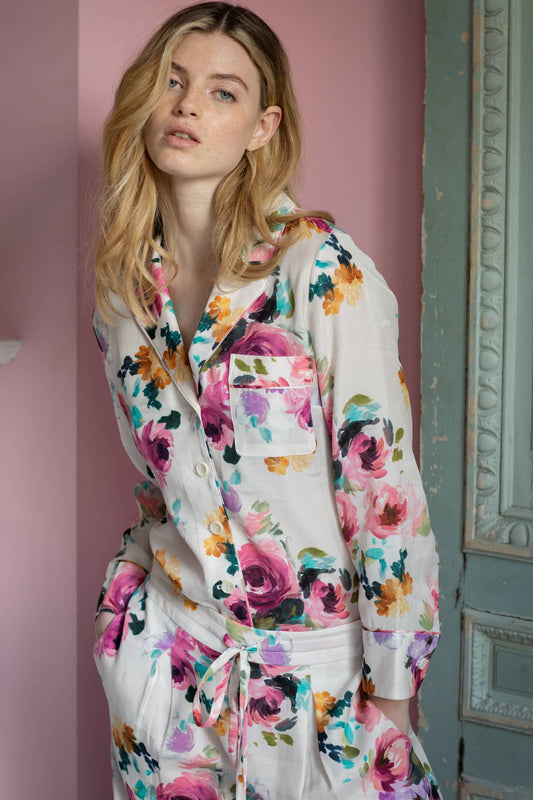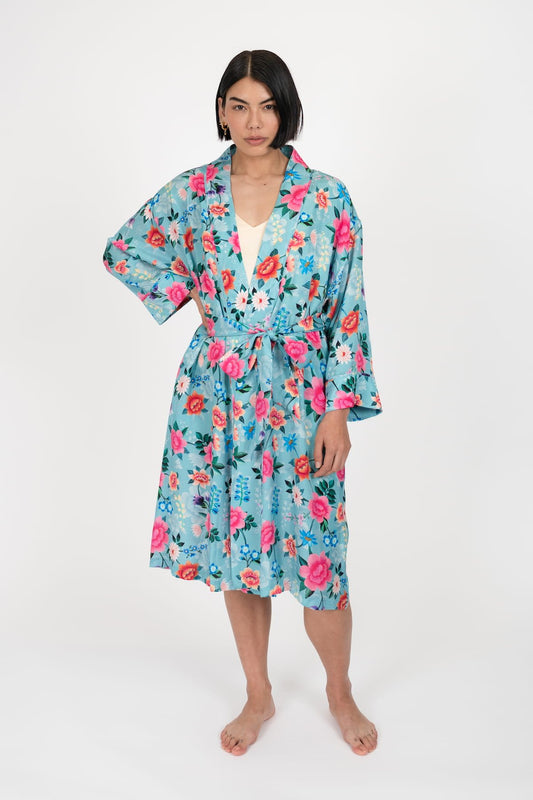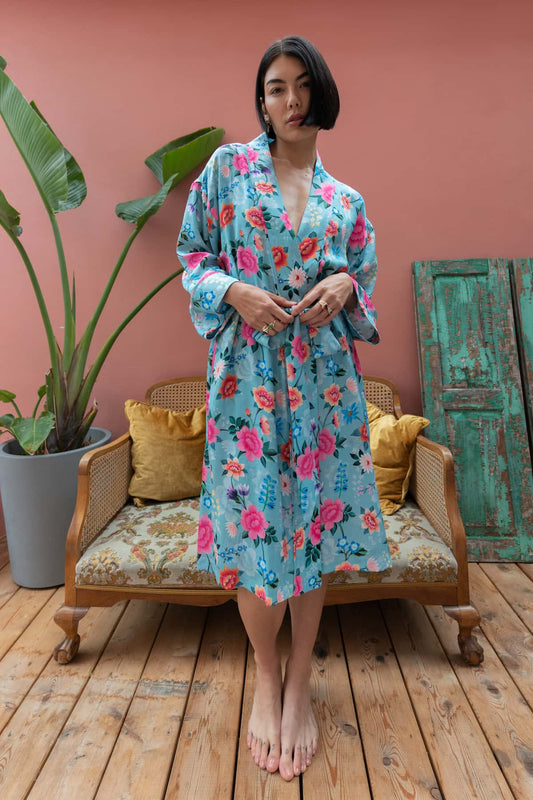Viscose is not inherently harmful to the environment, as it is made from trees, but the raw plant material requires a lot of chemistry to transform it into a viscose fibre, read on to learn about the science of viscose.
What Is Viscose?
Viscose (or Rayon) is a semi-synthetic fibre which is derived from cellulose, the material which makes up the fibrous substance found in all plants. Usually it is made from fast growing trees such as eucalyptus, pine or beech, as well as plants like bamboo, sugar cane or soy.
It is the third most widely produced fibre, after polyester and cotton.
Viscose is not inherently harmful to the environment, as it is made from trees, but the raw plant material requires a lot of chemistry to transform it into a viscose fibre.

Where Do The Trees Come From?
The sourcing of the trees used to make viscose can be done in an unsustainable way; It is estimated that 30% of the viscose produced for the fashion industry is sourced from ancient and endangered forests, which has a significant impact on bio-diversity, endangered animals and indigenous tribes.
There is an organisation called ‘Canopy’ who works with the forest industry’s biggest customers and their suppliers to protect endangered and ancient forests, and to make sure the trees used in the production of fabric for the textiles industry is sourced responsibly from sustainable and renewable sources.
Much like paper products, tree derived fibres can have a FSC (Forestry Stewardship Certification) or PEFC (Programme for the Endorsement of Forest Certification) to guarantee that it is sourced from responsibly managed forests.

Which Chemicals Are Used In The Production Of Viscose?
The main chemical used is called carbon disulphide, which is very volatile and flammable. It is a toxin which has been linked to heart disease, birth defects, cancer and severe mental health problems. Other chemicals used include sodium hydroxide (caustic soda) and sulphuric acid.
It is possible to make viscose in a ‘closed-loop system’ where the chemicals are recycled and reused inside the factory to prevent them from being released into the surrounding environment, thereby protecting local ecosystems and preventing severe health problems in the factory workers and the nearby population.
There are a few companies using this closed-loop manufacturing method, where the water entering their factories leaves as pure as it entered, however there are many more who are not. Certain factories, most of whom are in China are lagging behind with sustainable environmentally friendly initiatives, and they need to be held to account.

So, Is Viscose Environmentally Friendly?
Viscose has the potential to be more environmentally friendly than cotton, which is very water hungry, or polyester, which is derived from oil, if it is manufactured in a responsible way.
Thankfully there is a campaign running by the Changing Markets Foundation to increase awareness of ‘dirty viscose’; Their mission is to educate customers, challenge brands and manufacturers to ensure transparent and responsible production, and to push their suppliers to move to a more environmentally friendly closed-loop production system.
“The Changing Markets Foundation ‘Roadmap’ was developed due to the absence of an ambitious and comprehensive framework for addressing the challenges in viscose manufacturing; it provides guidance for brands, retailers and producers willing to move towards closed-loop viscose manufacturing.”
Final Thoughts And Research
It can seem overwhelming when faced with the unpleasant truth about the fashion industry, and it can be tempting to turn a blind eye and go on like before, hoping that brands and retailers will do the right thing, or the government will do something about it for us. Hopefully both of these things will happen, however it doesn’t relieve us from our own personal responsibility. Once we’re equipped with the right knowledge it gives us the power to make more informed choices.
People are becoming more aware and expect the fashion industry to be sustainable and accountable. There are small steps you can take to be a conscious consumer which, when combined with all the other people taking small steps, will turn into an avalanche before long.
79% of fashion users expect clothing brands to inform them of their environmental commitments and the measures they are taking to help minimise pollution in their supply chain.
Ask your favourite brands on twitter and Instagram whether they have a sustainable viscose policy in place and what they are doing to play their part to help the fashion industry become cleaner and greener.
We’ll be writing a blog post soon about some steps you can take to become a more conscious fashion buyer and user. Check our blog page or our Instagram feed for regular updates.
In the meantime, we recommend you visit our references and further reading in the links below.

